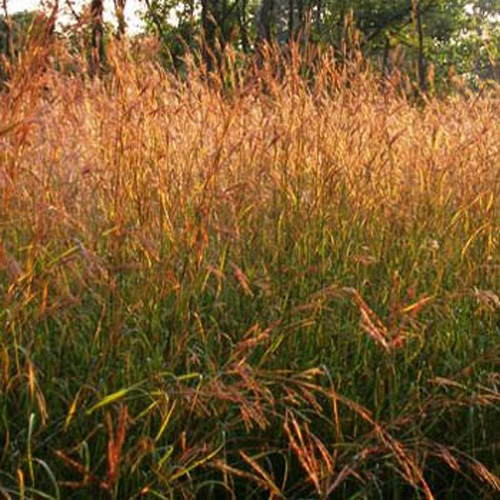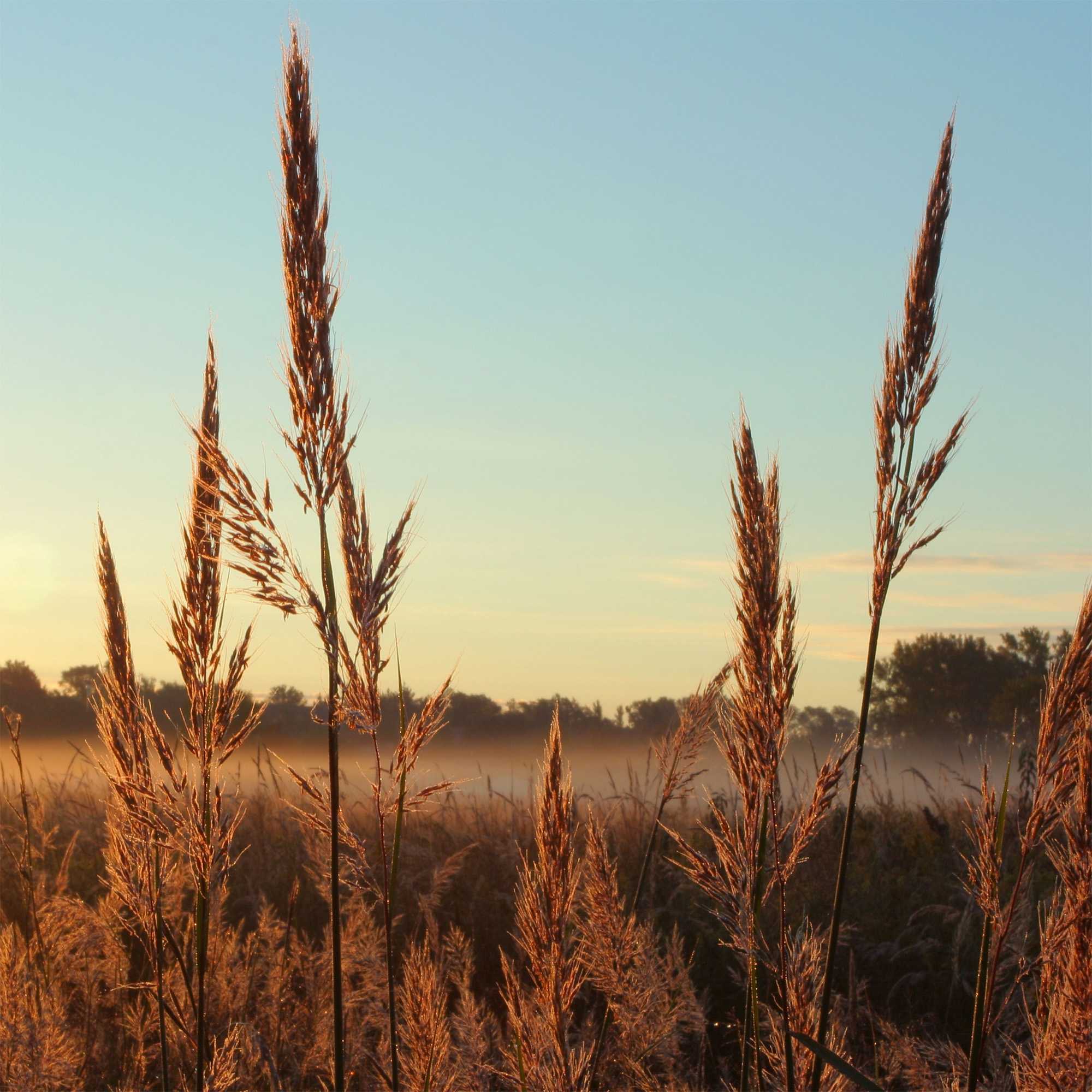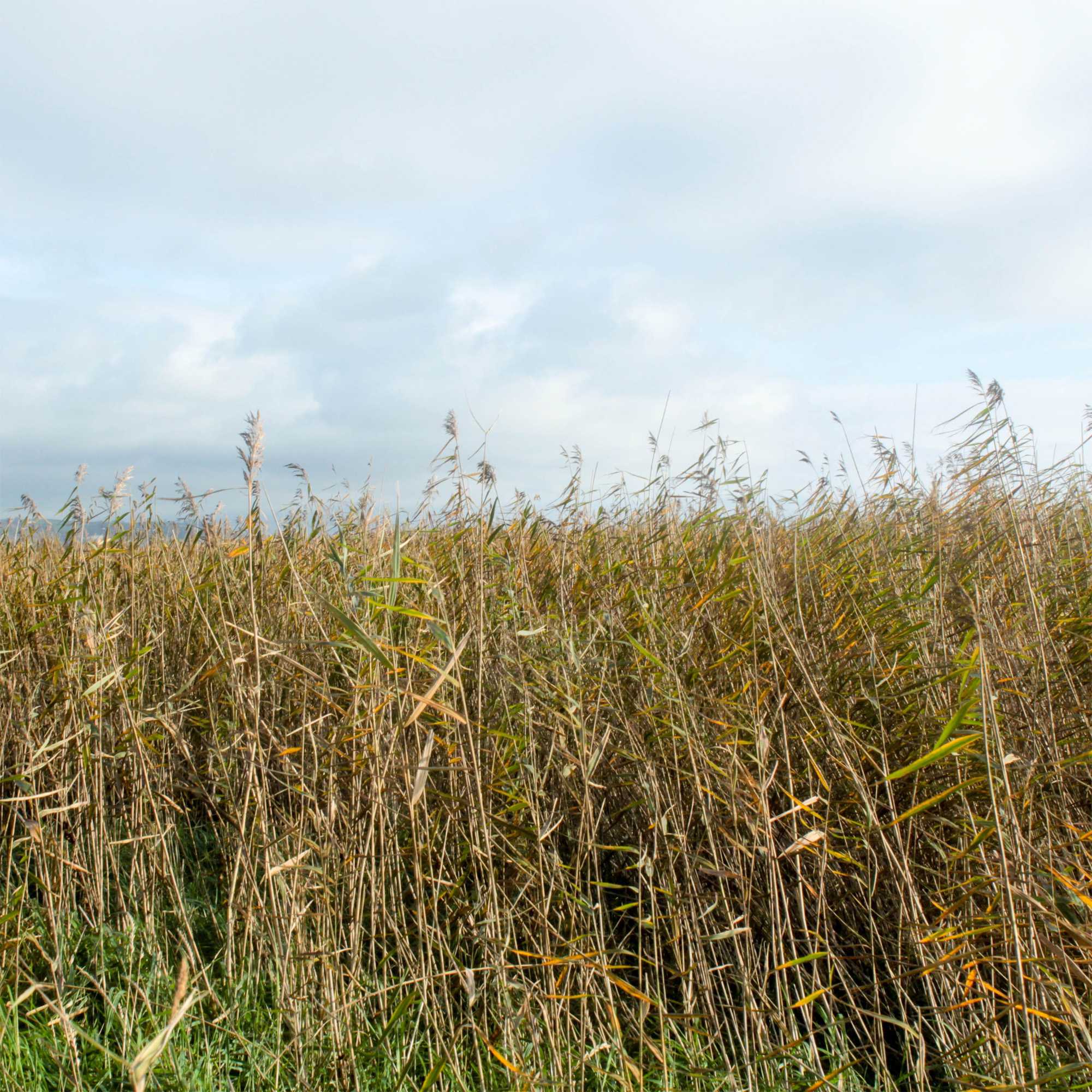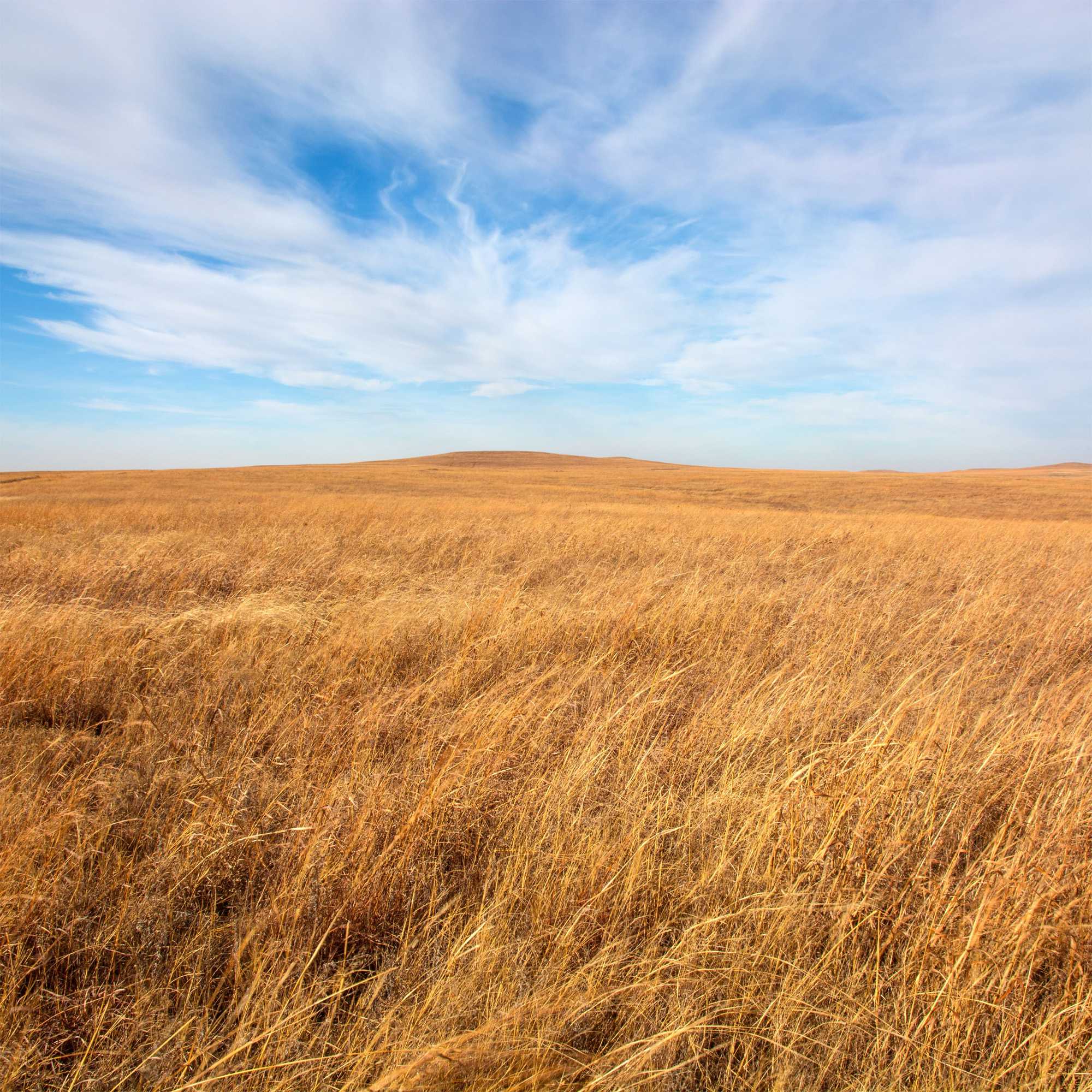Bluestem Seeds - Big

Grass Specifications
Season: Perennial
USDA Zones: 4 - 9
Height: 48 - 84 inches
Width: 24 - 26 inches
Foliage Color: Silvery Blue
Growth Rate: Moderate
Fall Color: Coppery Red
Soil Requirement: Sandy to loamy, pH 6.5
Environment: Full sun to partial shade
Latin Name: Andropogon gerardii
Planting Directions
Temperature: 65
Average Germ Time: 21 - 28 days
Light Required: No
Depth: 1/4 to 1/2 inch
Sowing Rate: 8 - 12 PLS lbs per acre or 1/2 - 1 PLS lb per 1000 square feet for ornamental plantings.
Moisture: Keep seed moist until germination




Big Bluestem (Andropogon gerardii) - Big Bluestem grass seeds can produce a versatile and attractive grass. It is a native grass and is a warm season perennial grass which has an attractive reddish-copper color in fall and can help create a beautiful landscape. In fact, some use it specifically as an ornamental grass. It blooms from June through September. In late summer, purplish flower spikes form. Big Bluestem is the most prevalent and widely distributed of all prairie grasses which can grow 4 to 7 feet tall.
Big Bluestem has tall and slender stems that are blue-green in the summer. The hairy blades, which can get to be 12 inches long and 1/2 inch wide, will get a red tinge on the leaves as they get older, and turn reddish copper in the fall. Big Bluestem grasses are excellent native grasses for landscaping and can be grown in pots or in the flower beds. It is a very attractive grass which works well as an accent plant or in mass plantings.
Big Bluestem Seeding Rate
8 - 12 PLS lbs per acre or 1/2 - 1 PLS lb per 1000 square feet for ornamental plantings.
PLS pounds - Pure Live Seed, or PLS, is the percentage of viable seed in a given lot. It is calculated by multiplying the purity percentage by the total germination percentage. For example, 95% purity multiplied by 85% total germination equals a 80.75% PLS. This means that out of every bulk pound of that bag of native grass seed that you plant, 80.75% of it is actually seed of that tagged variety and has the potential to germinate. Weights listed are bulk pounds.
Specifications
Type: Perennial
Mature Height: 4 - 7 feet
Soil Type: Well drained
Mature Spread: 2 - 3 feet
Flower Color: Purplish
Mature Form: Upright - Clump
Foliage Color: Silvery-blue
Growth Rate: Moderate
Fall Color: Reddish copper
Sun Exposure: Full sun
Moisture Requirements: Adaptable to dry
Zones: 4 - 9
Uses of Big Bluestem
Conservation: Andropogon gerardii Big Bluestem is the dominant native grass species of the Midwestern tallgrass prairie. It is mixed with other native prairie grasses for prairie restoration and highway re-vegetation or mixed with wildflowers. If mixing with wildflowers, it should be mixed with tall wildflower species; otherwise, the Big Blustem will dominate. While it does best in moist soils, it can be used for mine reclamation, logging road restoration and other restoration areas that have sandy or droughty conditions.
Erosion Control: Big Bluestem is planted to stabilize soil. Rhizomes (underground roots that form runners) are typically 1 to 2 inches below the soil surface, while the main roots can extend downward to 10 feet. Big Bluestem is also planted to provide aboveground protection against wind erosion.
Forage: Big Bluestem is a high quality forage species for all classes of livestock. Crude protein content of 16-18% is maintained from May through August but drops below 6% in September and October. It is often cultivated as a pasture grass and for hay-making. Big Bluestem can withstand substantial grazing. However, if this native grass is continually grazed closer than 6 to 8 inches, it will be out competed by other grass species. It is highly palatable to livestock during spring and summer and becomes coarse and less palatable during the fall and winter. Hay should be mowed in early to mid-summer to maintain high nutrition quality.
Landscaping: Big Bluestem is used in wildflower meadows and prairie plantings. It is also effective as a rear border or accent in native plant gardens. Big Bluestem ornamental grass is very showy and appealing.
Wildlife: Big Bluestem provides shelter for nesting birds and insects. Songbirds and prairie chickens consume the seeds while white-tailed deer and bison graze vegetative parts.
Distribution & Habitat of Big Blustem
Big Bluestem is native to the United States. It occurs in southern Canada, from Maine to Montana, south to Florida and New Mexico and into Mexico. It is found in open woods, prairies, meadows, along riverbanks, and roadsides. It is especially abundant in lowland prairies, overflow sites, and sandy areas.
Adaptation of Big Blustem
The USDA hardiness zones for Big Bluestem are 4 to 9. It is best adapted to moist, sandy or clay loams but also occurs in dry or shallow soils. It does well in full sun or partial shade. Prairie conditions, like low nutrient and moisture content, have conditioned many native grasses for use in well-drained soil with low fertility. It is not tolerant of heavy clays, extremely wet bottomlands, deep sands, high salinity, or high lime. Big Bluestem is generally shorter in the northern portion of its range, and taller in the southern portion of its range. It is a rhizomatous, sod-forming grass in the tall grass prairie and has a bunch grass appearance in more arid regions.
How To Grow Big Bluestem Grass
Fill germination trays and pots with moist soil or broadcast the native grass seed over the desired planting area. Sow the native grass seeds by hand, covering with a thin layer of soil. Keep soil evenly moist during germination and do not use fertilizer. The ornamental grass seeds can be sown directly outside from late winter to late spring. Emergence will occur in in 3 to 4 weeks depending on adequate moisture and soil temperatures. Plants will be ready for harvest in mid-summer to late fall. First-season growth is often slow. Rhizomatic regeneration in following years increases the growth rate.































